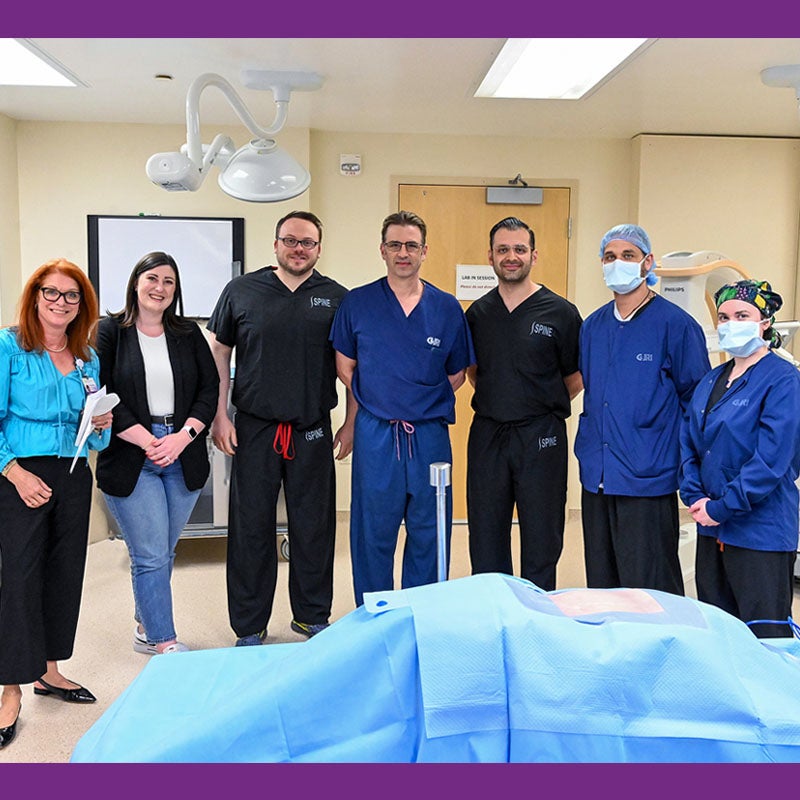Saint Francis Chosen as “Surgeon Observation Site” for Spine Surgery
May 9, 2024Categories: Organizational Updates
 Saint Francis was chosen by Stryker, a global leader in medical technologies, to be a “Surgeon Observation Site,” the only one of its kind in New England. Utilizing the state-of-the-art International Learning Center (ILC) located on the Saint Francis campus, surgeons from the hospital’s Spine Institute of Connecticut will act as key faculty for the program.
Saint Francis was chosen by Stryker, a global leader in medical technologies, to be a “Surgeon Observation Site,” the only one of its kind in New England. Utilizing the state-of-the-art International Learning Center (ILC) located on the Saint Francis campus, surgeons from the hospital’s Spine Institute of Connecticut will act as key faculty for the program.
The faculty includes Orthopedic Spine Surgeons David Kruger, M.D., and Robert Stockton, D.O.; Neurosurgeons Howard Lantner, M.D., and David Spiro, D.O.; and Vascular Surgeon Scott Fecteau, M.D. As a "Surgeon Observation Site,” Saint Francis will host surgeons traveling from national and international locations to learn contemporary spine surgery techniques such as minimally invasive Anterior Lumbar Interbody Fusion (ALIF), Anterior to Psoas (ATP), and Oblique Lumbar Interbody Fusion (OLIF) approaches, as well as Sacroiliac (SI) Joint Fusion.
“We are extremely proud to be one of just a few Stryker Surgeon Observation Sites across the country,” said Dr. Kruger, who serves as Medical Director of the Spine Institute of Connecticut. “The experience of our orthopedic spine, vascular, and neurosurgeons at Saint Francis is extraordinary, and we are excited to share that knowledge with other surgeons from around the world to help bring high-quality, state-of-the-art treatments and care to patients.”
The Spine Institute of Connecticut team has mastered the ALIF approach, which allows for smaller incisions and significantly reducing the amount of time a patient spends in the operating room. A collaboration between vascular surgeons, neurosurgeons, and orthopedic spine surgeons, ALIF optimizes access to the spine, producing a superior view during the procedure by providing better exposure to the area of focus. Typically, this type of procedure could take several hours, but with Dr. Fecteau’s expertise, the procedure time can be reduced to less than two hours, minimizing the amount of time the patient requires anesthesia and improving potential outcomes.
